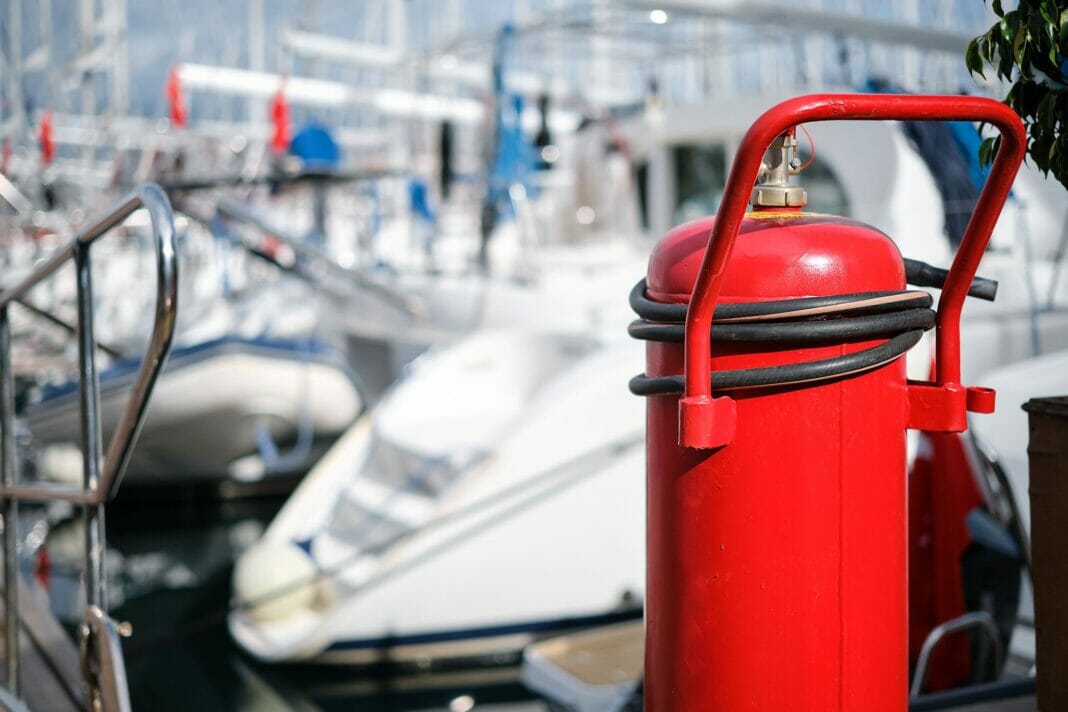Fire extinguisher maintenance is an essential task for all boat owners to ensure the safety and security of their vessels. A fire on board a boat can be a devastating event and could lead to loss of life and severe damage to the vessel. Preventing such a disaster should therefore be a top priority for boaters. This article will provide an in-depth guide on how to maintain and inspect fire extinguishers on board, including the different types of fire extinguishers, inspection procedures, and servicing requirements.
Types of Fire Extinguishers
Before diving into the maintenance process, it’s essential to understand the various types of fire extinguishers available for boaters. Depending on your boat size and the nature of the potential fire hazards on board, you might require one or more types of extinguishers.
1. Water and Foam Fire Extinguishers: These are designed to extinguish Class A (common combustibles such as wood, paper, and cloth) and Class B (flammable liquids) fires. Foam extinguishers may be more effective on flammable liquids due to the surfactants in the foam.
2. Dry Chemical Fire Extinguishers: Suitable for Class A, B, and C (electrical fires) fires, these extinguishers use a fine powder to interrupt the chemical reaction in the fire triangle.
3. CO2 Fire Extinguishers: Primarily used for Class B and C fires, CO2 extinguishers work by displacing oxygen in the area and cooling the surrounding area.
4. Clean Agent or Halogenated Fire Extinguishers: These are suitable for Class B and C fires and leave no residue behind. The extinguishing agents work by inhibiting the chemical reaction within the fire.
Visual Inspection
Regular visual inspections are an essential aspect of fire extinguisher maintenance. Boaters should perform these inspections at least monthly. During a visual inspection, consider the following aspects:
1. Accessibility: Ensure that the fire extinguisher is easily accessible and not obstructed by any equipment or storage items.
2. Pressure: Check that the pressure gauge is within the green zone, indicating the proper working pressure.
3. Physical Condition: Look for any signs of physical damage, leakage, or corrosion on the extinguisher body, handle, hose, and nozzle.
4. Inspection Tag: Record the date of your visual inspection on the fire extinguisher’s inspection tag for future reference.
Annual Inspection and Servicing
In addition to monthly visual inspections, boaters should also arrange for an annual inspection performed by a professional fire protection technician. These inspections will involve more thorough checks, including weighing the extinguisher to ensure it contains the proper amount of extinguishing agent.
If your fire extinguisher has a rechargeable design, it should be hydrostatically tested every 12 years to ensure the cylinder’s integrity. For non-rechargeable extinguishers, replace them after the manufacturer’s recommended service life.
Best Practices and Additional Tips
1. Familiarize yourself and other crew members with the proper use of fire extinguishers on board.
2. Ensure fire extinguishers are mounted securely, yet easy to remove in case of an emergency.
3. Regularly review the specific instructions provided by the fire extinguisher manufacturer and follow their guidelines for service and replacement.
4. Consult with a professional marine fire protection specialist for advice on the appropriate number, size, and type of fire extinguishers for your vessel.
Fire extinguisher maintenance is a vital aspect of boater safety that cannot be overlooked. By ensuring that your fire extinguishers are in good working order through regular visual inspections and annual servicing by a professional, you can significantly reduce the risk of a disastrous fire onboard your vessel. So take these preventative steps and enjoy your boating adventures with the peace of mind that comes with proper fire safety measures.


